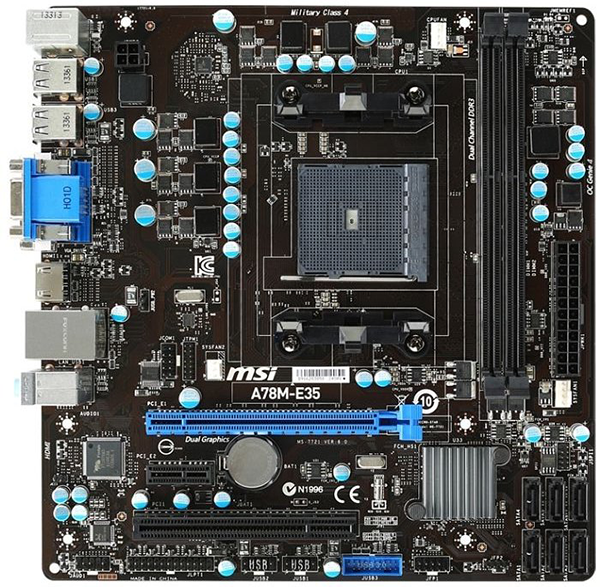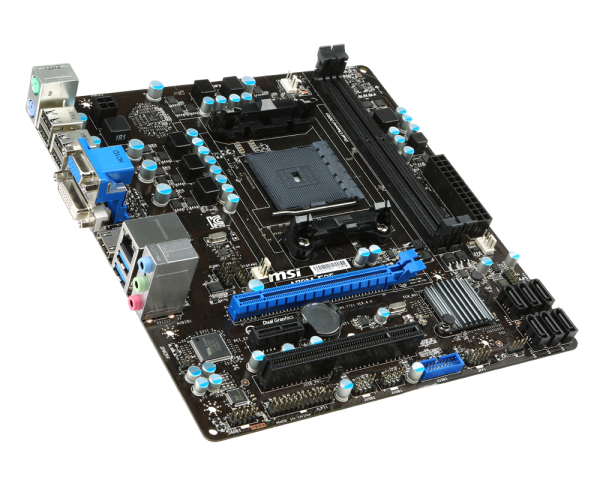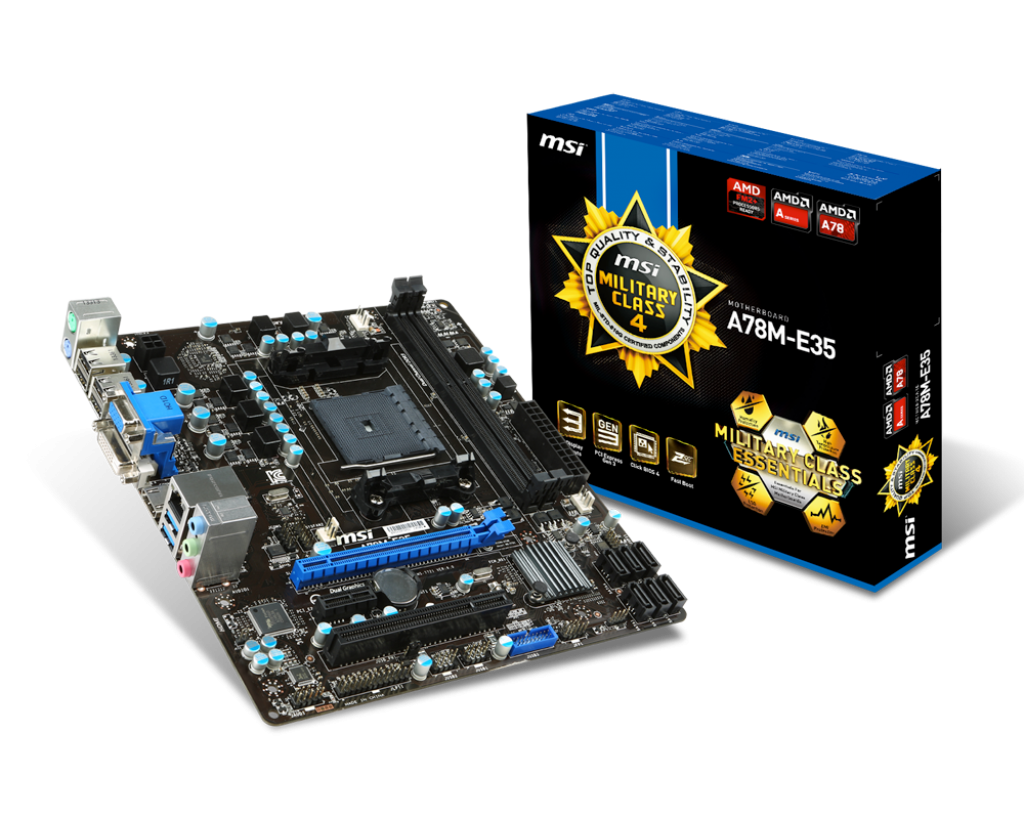MSI A78M-E35 Versus Gigabyte GA-F2A78M-D3H
Today we look at two AMD A78-based motherboards (MSI's A78M-E35 and Gigabyte's GA-F2A78M-D3H), to determine how they stack up against A88X.
Why you can trust Tom's Hardware
MSI A78M-E35
MSI's A78M-E35 is the smaller of our two A78 boards, measuring 8.9x8.5 inches. Though both samples are microATX-sized, MSI's offering is geared more toward smaller enclosures and entry-level builds. With its reduced size, I have access to only two DDR3 DIMM slots, and the bottom of the board does get cramped if you have a PCI card installed. There is only one available four-pin ATX12V CPU connector, so make sure your power supply has a four-pin lead or that it can split its eight-pin connector.




The board offers two four-pin PWM fan connectors (one system fan and one CPU fan); they're are located right where you would need them. For those of us with legacy peripherals, two PS/2 ports are available. There are enough USB ports available on the back panel and through headers to satiate mainstream users, though higher-end chipsets enable more.
MSI's UEFI definitely has more of a GUI-like feel than I am used to, and the home screen isn't as intuitive as I would have liked. Working through some of the pages, I noticed that the option selections were not consistent. Some of them required clicking for a list of settings, others demanded that you press + or - to increment up or down and some wanted you to key a number in specifically. Finally, since this is an entry-level board, there is no access to voltage biasing through the BIOS. If you intend to use OC Genie, MSI's one-button overclock, the software tool only supports 65W APUs with this chipset.
Looking at the board's packaging, "Military Class, "Top Quality" and "Stability" are the most readily apparent phrases. For less than $60 (at the time of this writing), that seems like a lot of marketing for such a low price tag. MSI has been a solid contender in the past, so I look forward to seeing the results.
Get Tom's Hardware's best news and in-depth reviews, straight to your inbox.
Current page: MSI A78M-E35
Prev Page An Introduction To AMD's A78 Chipset Next Page Gigabyte F2A78M-D3H-
-Fran- The only problem I have with these boards, is the lack of a proper sound chip in them. The Realtek 887 sucks. It had been a 889 or a 1150 or even a VIA VT17xx, VT18xx or a VT 20xx.Reply
Plus, the VRMs have to be of good quality as well for noise over the sound card. Remember you're recommending these boards for HTPC as well, so noise over audio is a HUGE issue when not careful.
Cheers! -
SuperVeloce "It's also important to note that Intel’s multi-thread to single-thread ratio is 1.91 (close to two since it’s a dual-core processor), whereas AMD's ratio is 3.58, quite a way off from the ratio of four for a quad-core processor. This shows how important CPU architecture is."Reply
Well, A10 apu has turbo, Pentium does not, so there is that -
Shankovich Nifty little review. Have a friend who wants to game on PC more than console but doesn't want to spend much, was looking into AMD's APU's.Reply
Also, I love Gigabyte and they're usually my first choice for boards, but this review highlights my biggest pet peeve with them: fan header placement. Seriously Gigabyte, stop putting the damn things in line with PCI-E slots or in the most hard to reach places. -
Someone Somewhere One minor change: The specs chart up the top shows both boards as not having a digital audio out, but it's fairly obvious from the images that the Gigabyte does.Reply -
TheTerk ReplyOne minor change: The specs chart up the top shows both boards as not having a digital audio out, but it's fairly obvious from the images that the Gigabyte does.
the sample I reviewed is PCB revision 4.0 which does not have an optical out on the rear panel. Looking at Gigabyte's A78 page, revision 3.0 has the optical connector on the rear panel. Looks like there's a header location on the rev 4 board for S/PDIF connector. We will update the article accordingly.
-
logainofhades Reply16053568 said:I think you could have gone with faster ram for the igpu and ditched the GT 730
The GT 730 would still be faster, as it was the 64bit, GDDR5, version. If memory serves me right, the 7850k's IGP was about even with an R7 240. The GT 730 is 3 tiers above that, according to the GPU Hierarchy Chart.
-
RedJaron Reply
We also aren't going for maximum performance or performance/money here. Keeping the test benches similar ( hopefully identical except for the reviewed part, ) means the results are more comparable.16060542 said:16053568 said:I think you could have gone with faster ram for the igpu and ditched the GT 730
The GT 730 would still be faster, as it was the 64bit, GDDR5, version. If memory serves me right, the 7850k's IGP was about even with an R7 240. The GT 730 is 3 tiers above that, according to the GPU Hierarchy Chart. -
jack_28 Actually the a10 7850k onboard gpu (with 2133 mhz ram) is closer to the r7 250 ddr 3 . One can easily find articles testing this by a little googling.Reply